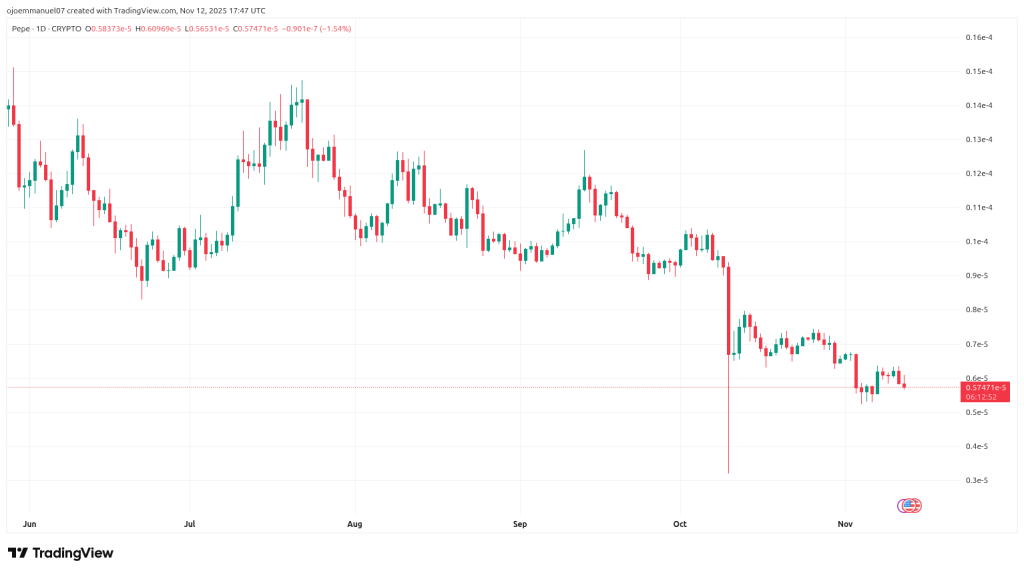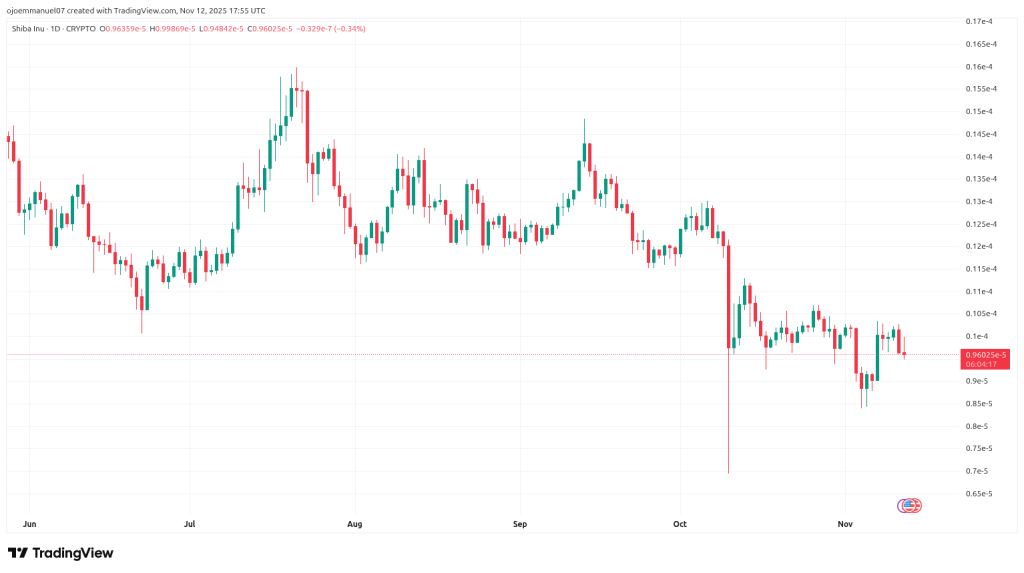The Best Meme Coin to Invest In as Both Little Pepe (LILPEPE) and Pepe Coin (PEPE) Are Set to Outshine Shiba Inu (SHIB)

The post The Best Meme Coin to Invest In as Both Little Pepe (LILPEPE) and Pepe Coin (PEPE) Are Set to Outshine Shiba Inu (SHIB) appeared first on Coinpedia Fintech News
Once again, the meme coin market is gaining attention, prompting trade discussions on which project might lead the upcoming bull run. Currently, ‘Little Pepe’ (LILPEPE) and ‘Pepe’ (PEPE) are the most talked about, as they are once again posing the most potential, while Shiba Inu (SHIB) shows signs of weakening. As social sentiment shifts and meme coin offerings emerge, investors seek the best cryptocurrency to invest in. Consequently, the two Pepe-themed tokens are positioned to become the next big meme coin market movers.
Pepe Coin (PEPE): Whale Selling Meets Structural Weakness
Pepe Coin (PEPE) is currently trading at about $0.0000065, recovering slightly amid volatility. But experts seem to be less optimistic. They have noted that the price chart over the past few years shows a head-and-shoulders (H&S) pattern, a common indication of a price drop. If the bearish H&S pattern on Pepe Coin is triggered, it may drop to $0.0000011, which is almost 80% below its current price.

The recent drop in whale Pepe Coin holdings, by over 2 trillion tokens, has only exacerbated sell pressure. This is occurring amid a broader decline in the meme coin market, with Dogecoin and Shiba Inu down over 50% this year. The absence of a price breakout in Pepe Coin during this bull market, with $0.000016 serving as a critical resistance level, will trigger further sell pressure in PEPE. Nonetheless, some traders are betting on the speculative rally in the meme market and are likely to buy Pepe Coin despite the bearish fundamentals.
Shiba Inu (SHIB): Fighting to Stay Relevant
Shiba Inu (SHIB) rose 5% in the last 24 hours, trading above $0.00000093 after weeks of steady decline. The token’s renewed optimism comes from hopes that it might “erase another zero” if the market recovers. SHIB’s burn mechanism, which destroyed over 3 million tokens in a single day, continues to attract attention as the supply gradually decreases.

On-chain activity within Shibarium, SHIB’s Layer 2 network, has also increased, driving more utility and transaction volume. Still, despite improving fundamentals, SHIB’s price momentum remains weak compared to newer meme coins. Many traders believe that the next explosive growth will come from fresher, community-driven projects rather than legacy meme coins, putting Little Pepe among the best cryptos to buy for higher upside.
Little Pepe (LILPEPE): The Rising Star of the Meme Coin Market
While older meme coins face resistance, Little Pepe (LILPEPE) is emerging as the next major contender. Unlike most newcomers, LILPEPE is CertiK-audited, giving it a layer of credibility and investor safety that meme coins typically lack. It also features anti-bot protection and zero gas fees, ensuring a fair presale and smooth transactions for early adopters. The project’s massive $777,000 giveaway and 15 ETH mega event have garnered viral attention across Telegram and X (formerly Twitter), resulting in explosive community growth. This early traction places LILPEPE at the center of retail excitement, where low market cap and high engagement often translate into outsized returns. For many retail traders, it’s the best crypto to buy before the next meme coin cycle fully kicks off.
Why LILPEPE and PEPE Could Outperform SHIB
The market narrative is shifting fast. Shiba Inu is now seen as an established brand rather than a high-growth token, while LILPEPE and PEPE represent the new wave of speculative energy. LILPEPE’s secure tokenomics, community-first design, and active presale give it an advantage in transparency and fairness traits often missing from meme coins. Meanwhile, Pepe Coin, despite its technical weakness, retains cultural dominance and brand recognition that could spark another rally if sentiment improves. However, analysts agree that LILPEPE’s CertiK audit, giveaway incentives, and anti-bot system make it the safer play among volatile meme tokens, and likely the best crypto to buy for early-stage investors seeking both fun and potential.
Final Thoughts
The meme coin arena is evolving. Shiba Inu may remain relevant, but it’s losing its explosive appeal to new entrants like Little Pepe (LILPEPE), a project that blends transparency, security, and community hype. With zero gas fees, anti-bot protection, and a thriving presale ecosystem, LILPEPE could redefine what meme investing looks like in 2025. If you’re looking for the best crypto to buy, join the official LILPEPE Telegram and explore the presale page before the hype reaches its next stage. The next breakout meme coin might already be here, and early believers could be the biggest winners.
For more information about Little Pepe (LILPEPE) visit the links below:
- Website: https://littlepepe.com
- Whitepaper: https://littlepepe.com/whitepaper.pdf
- Telegram: https://t.me/littlepepetoken
- Twitter/X: https://x.com/littlepepetoken
- $777k Giveaway: https://littlepepe.com/777k-giveaway/
You May Also Like

VeChain Releases VeWorld v2.4.10 With Major Token Exploration Upgrades

Justin Sun: Over 95% of the USDJ supply has been bought back at a premium, leaving only about $200,000 worth of USDJ on the market.
